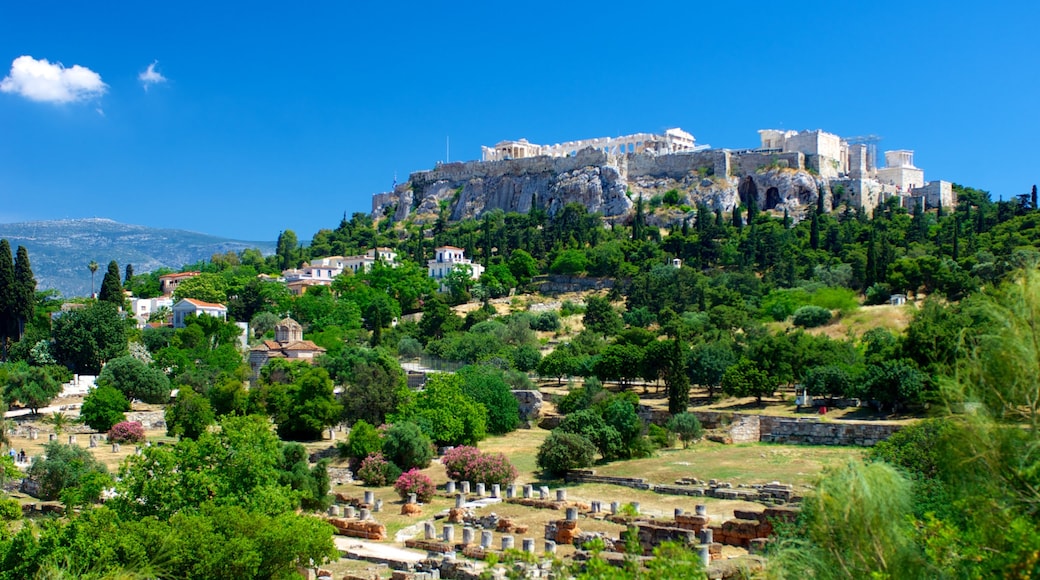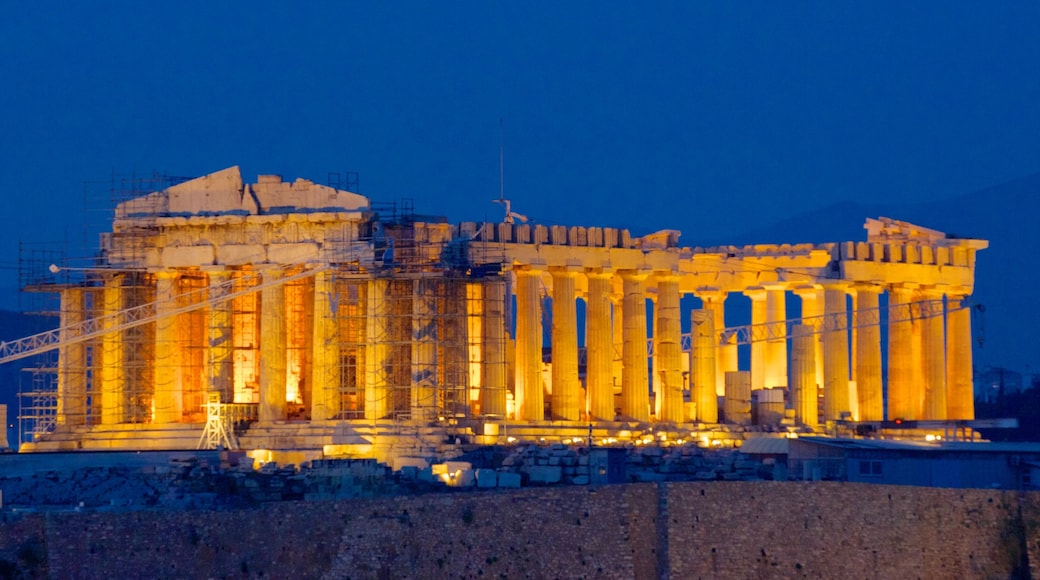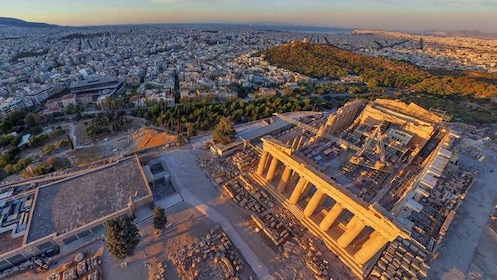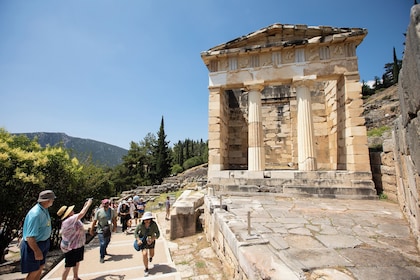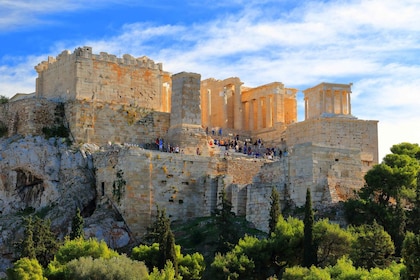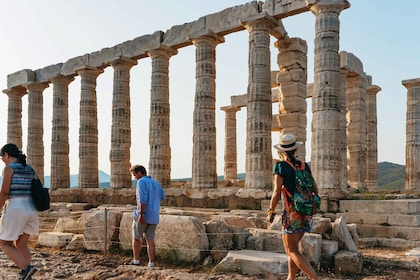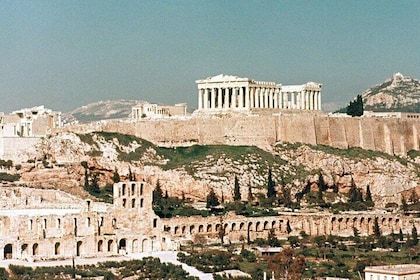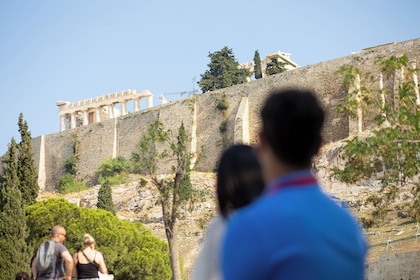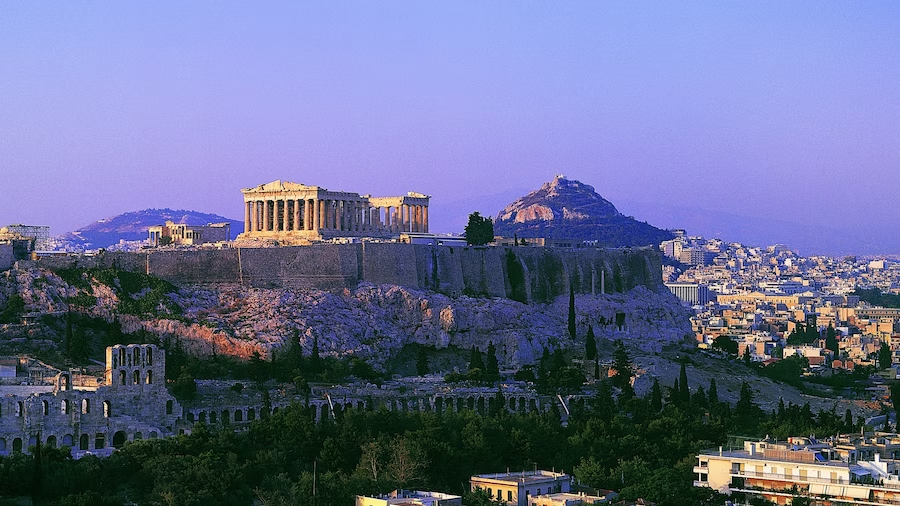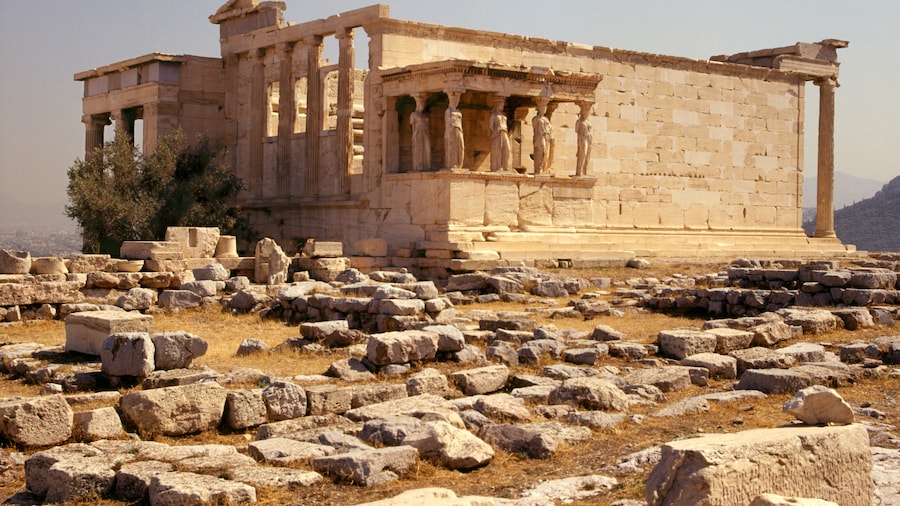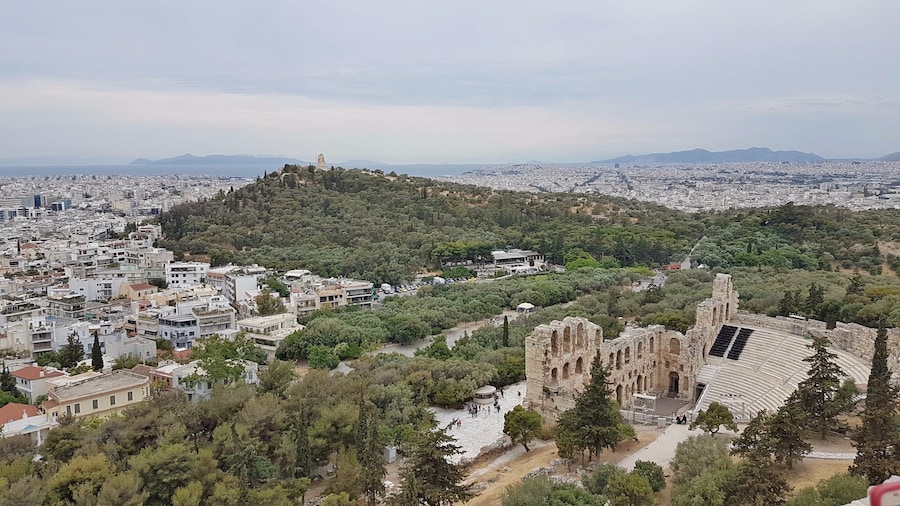The Parthenon – the iconic symbol of Greek culture and civilisation – is just one of the many temples on the Acropolis that still inspire awe, 2500 years later.
The Acropolis of Athens certainly isn't your average 'sight-to-be-seen' – it's truly in a category all of its own. This sacred hill, and its beautiful temples, have been a magnetic draw to tourists from the Romans onwards. Partly that's because those temples rise from this slab of rock in such a poised and dramatic manner. But it's also because we owe the Ancient Greeks so much. The Acropolis is where we can wander under columns familiar to the great philosophers and democrats that shaped the western world.
Look up, and you can see why the Greeks chose this hill to build their temples to the Gods. The largest and most iconic of its temples – the Parthenon – shimmers above Athens, visible from most points in the city. But before you reach the Parthenon, you must first pass through its gateway – the Propylaea.
It was built by Phidias in 437 BC, a time when Athenians were at their peak, busily re-building the Acropolis after their victory over the Persians. Recently refurbished, one the most fascinating aspects of the Propylaea is the part-restored ceiling. It was famed in the ancient world for its star-studded deep-blue colour. Once through its gates, you'll see the Parthenon almost directly ahead. But to its left is the Erechtheion, a more complete temple built around the same time. It is worth detouring here to see the famous 'Porch of the Maidens', with its six female figures supporting its southern porch, gazing towards the Parthenon.
The Parthenon itself is a mammoth temple. It has undergone a significant conservation effort over the last few decades, and is more complete than ever (over its 2,500 years of history, it had fallen foul to wars, conversions and over-enthusiastic reconstructions). The subtle lines of its columns have been considered the most perfect of any Doric temple its front façade obeys the geometric rule of the 'Golden Rectangle', furthering enhancing its bold visual elegance. Stand on its steps, looking back over the city, and you can fully appreciate how the Acropolis elevated the ancient Athenians – to within touching distance of their gods.
